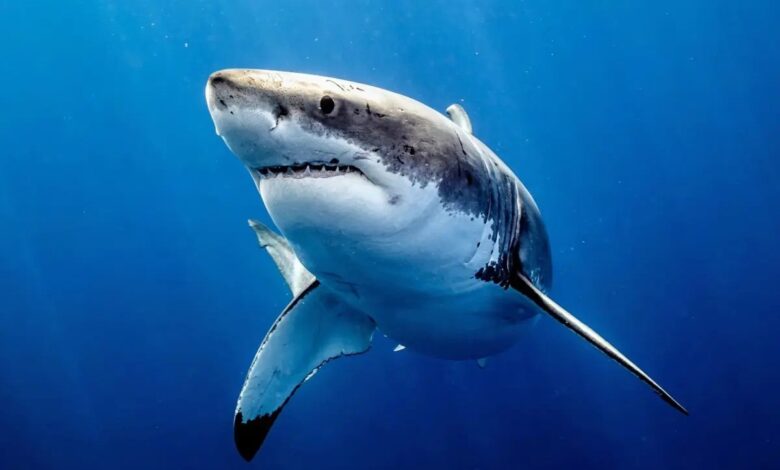Shark Eats Shark: The Unveiling of a Marine Mystery
The species is listed as endangered in the Northwest Atlantic

In a marine mystery reminiscent of a detective novel, researchers from the United States embarked on an investigation into the death of a pregnant porbeagle shark in the waters southwest of Bermuda. The evidence points to a larger shark, armed with its triangular teeth, as the most likely predator.
“This is the first documented case of a porbeagle shark being preyed upon anywhere in the world,” said Brooke Anderson, the study’s lead author and a former graduate student at Arizona State University. She emphasized the significance of the event, noting that the loss of a reproductive female, along with her unborn pups, could have serious implications for the already endangered porbeagle population.
Porbeagle sharks are powerful predators, found in the Atlantic, South Pacific, and Mediterranean. These robust sharks can grow up to 3.7 meters in length and weigh as much as 230 kilograms. They are also long-lived, with some reaching ages of 30 to 65 years. However, their slow reproductive rate, with females maturing at around 13 years old and giving birth to an average of four pups every one or two years, makes them particularly vulnerable to population declines.
Threats like overfishing, bycatch, and habitat loss have already pushed porbeagle sharks to the brink. The species is listed as endangered in the Northwest Atlantic on the IUCN Red List, with populations in the Northeast Atlantic and Mediterranean considered critically endangered.
In their broader research on shark migration, Anderson and her team tagged porbeagle sharks off Cape Cod, Massachusetts, in 2020 and 2022. Each shark was equipped with two satellite tags: a fin-mount satellite transmitter and a pop-off satellite archival tag (PSAT). The fin-mount tag transmitted the shark’s location whenever the fin surfaced, while the PSAT recorded depth and temperature data, storing it until it detached and floated to the surface.
One of the tagged sharks was a pregnant female, measuring 2.2 meters in length. Anderson and her team hoped to gain insights into the habitats crucial for porbeagle mothers and their young. However, the study took an unexpected turn. After 158 days, the PSAT began transmitting from an area off Bermuda, indicating it had detached from the shark.
The transmitted data revealed that the female porbeagle had spent five months swimming at depths between 100 and 200 meters at night and 600 to 800 meters during the day. But on March 24, 2021, the temperature recorded by the PSAT suddenly remained steady at 22°C at depths between 150 and 600 meters for four days, indicating that the shark had been eaten by a larger predator. The PSAT was likely excreted four days later, when it began transmitting again.
Anderson and her team identified two potential predators: the great white shark and the shortfin mako. While both are capable of preying on porbeagles, the great white shark is the more likely culprit, given the data recorded by the PSAT.
This discovery sheds new light on the complex interactions between large marine predators. Anderson noted that while sharks are often seen as apex predators, this event highlights the intricate dynamics within the ocean’s food chain. Continued research into these predator interactions is crucial for understanding their impact on marine ecosystems.
Follow us on Instagram, YouTube, Facebook, Whats App, and TikTok for latest updates.
















